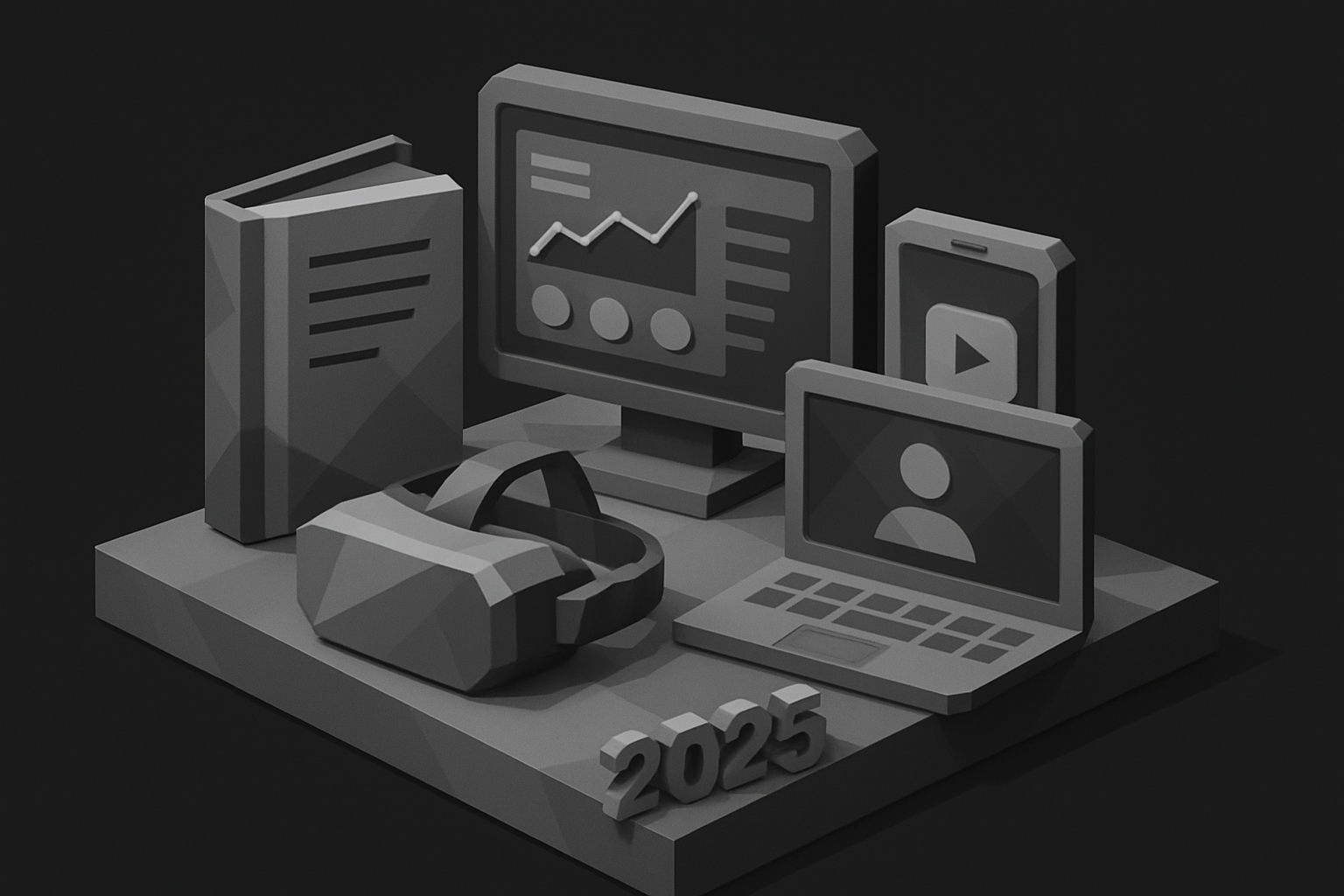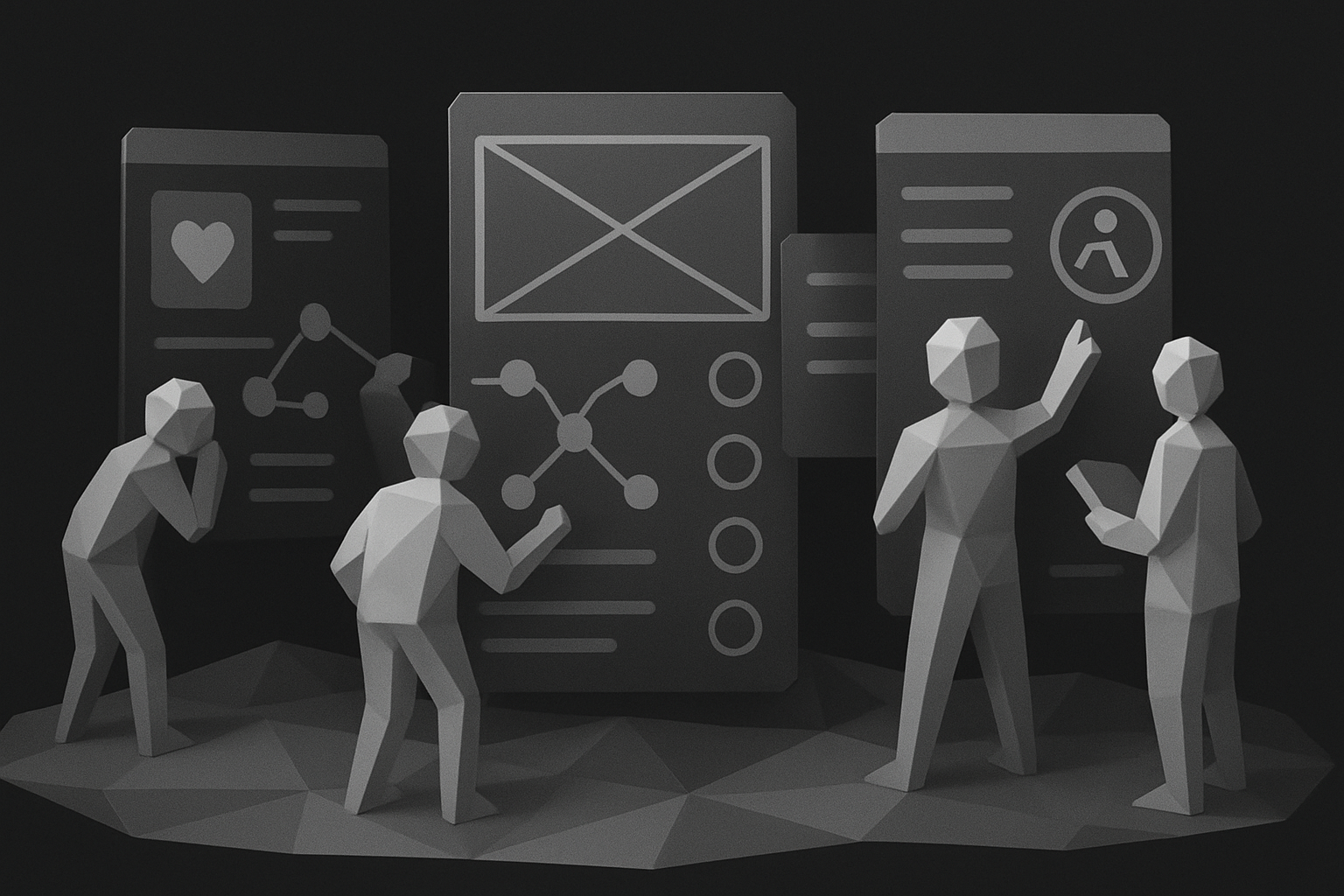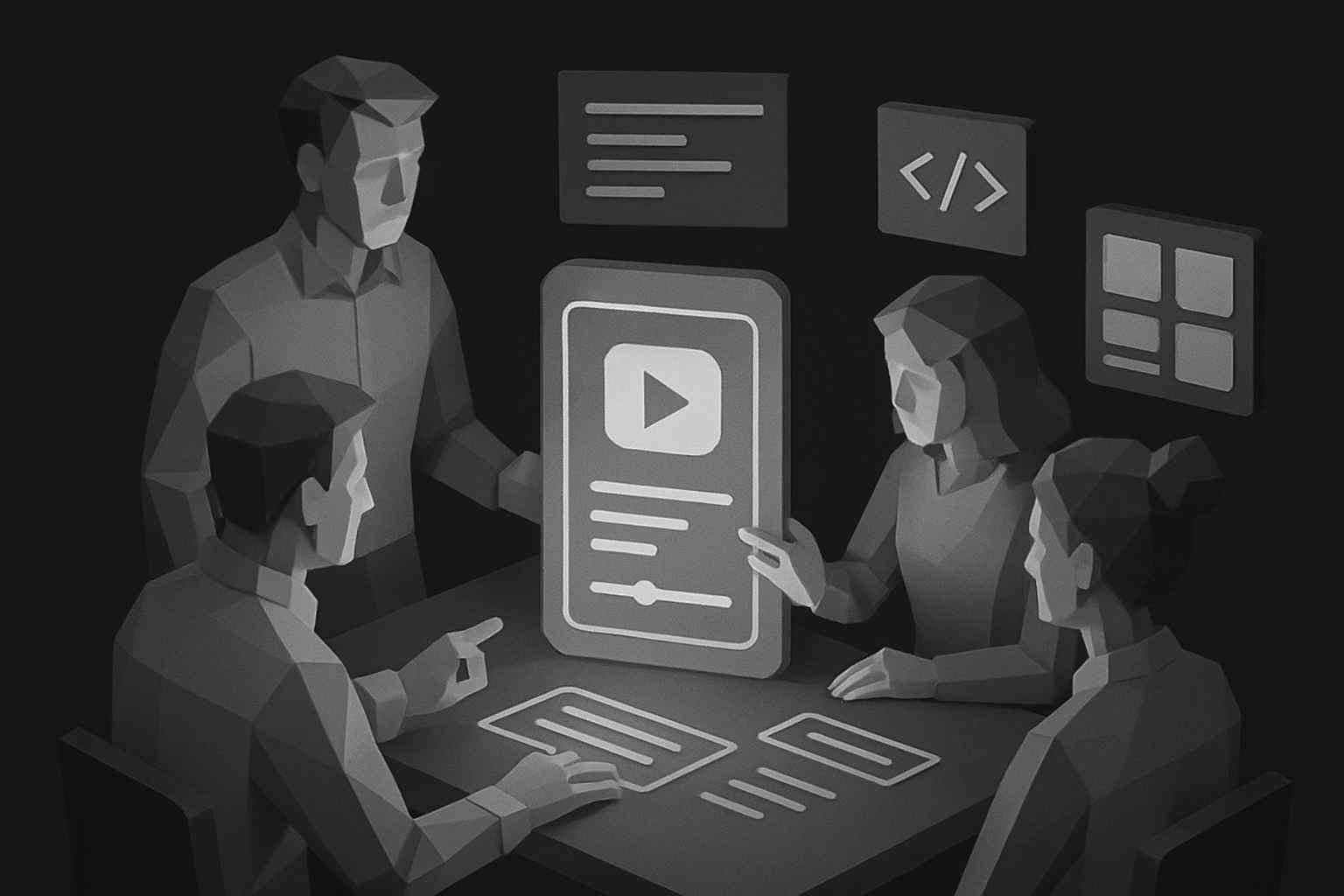Digital products are booming in 2025—competition is fierce and technology is evolving faster than ever. In this environment, simply having a great idea isn’t enough.
This guide is your blueprint for designing digital products that truly stand out. We’ll break down the entire process, from the first spark of inspiration to market launch and beyond.
Curious how to thrive amid rapid change? Expect actionable strategies, expert insights, and a step-by-step roadmap designed for today’s market.
We’ll cover everything: ideation, user research, UX/UI best practices, prototyping, collaborating with developers, accessibility, and the latest trends shaping the future.
Understanding the Digital Product Landscape in 2025
The digital marketplace is transforming at breakneck speed. In 2025, designing digital products means navigating a landscape filled with innovation, fresh challenges, and unprecedented opportunities. Let’s break down what’s shaping this vibrant ecosystem—and why understanding these trends is crucial if you want your next product to stand out.

Defining Digital Products and Their Types
Digital products come in many forms—think eBooks, SaaS platforms, online courses, design templates, and mobile apps. Unlike physical items, digital products are intangible and can be distributed instantly, making them highly scalable. In 2025, the digital marketplace is expected to surpass $350 billion globally, fueled by the rise of SaaS and AI-driven tools.
What sets digital products apart? They’re easier to iterate, personalize, and automate. For example, SaaS startups like Notion and Figma have soared by offering flexible, cloud-based solutions. If you want a deeper dive, this Complete digital products guide covers foundational insights for designing digital products that thrive in today’s market.
Evolving User Expectations and Behaviors
Today’s users are more demanding than ever. They expect seamless, cross-device experiences and instant access to value. When designing digital products, speed and intuitive onboarding are non-negotiable. AI-powered personalization is now standard—just look at Spotify’s custom playlists or Duolingo’s adaptive lessons.
Data shows that 70% of consumers want tailored digital experiences. If your product can’t deliver, users will move on fast. Meeting these expectations requires a deep understanding of user journeys and the ability to anticipate changing needs.
Key Challenges and Opportunities in 2025
The competition for attention is fierce. With so many options, designing digital products that capture interest is increasingly challenging. Common hurdles include market saturation, intellectual property threats, and evolving regulations around privacy and accessibility.
Yet, opportunities abound. Niche markets—like hyper-local language learning apps or specialized productivity tools—are ripe for innovation. Staying agile and focusing on underserved micro-communities can help your product carve out a loyal user base, even in a crowded field.
The Role of Emerging Technologies
Emerging tech is reshaping every stage of designing digital products. Artificial intelligence, machine learning, AR/VR, and blockchain are driving smarter workflows and richer user experiences. AI-powered prototyping and automated testing are streamlining design cycles. For example, Figma now uses AI to accelerate ideation, while blockchain enables unique digital ownership models.
By 2025, 60% of new digital products will incorporate AI in some form. Staying current with these technologies isn’t just an advantage—it’s essential for long-term relevance and user satisfaction.
Business Models for Digital Products
There’s no one-size-fits-all approach to monetizing digital products. Popular models include subscriptions (Netflix), freemium (Canva), one-time purchases (Gumroad), and hybrids. Subscription models have seen a 30% year-over-year increase, reflecting a shift toward recurring revenue.
Here’s a quick comparison:
| Model | Example | Revenue Style |
|---|---|---|
| Subscription | Netflix | Recurring |
| Freemium | Canva | Free + Paid Tier |
| One-time | Gumroad | Single Purchase |
When designing digital products, choosing the right model depends on your target audience and growth goals. The most successful products are those that align business strategy with user value—ensuring sustainable growth in a fast-evolving market.
Step 1: Ideation and Market Validation
Coming up with a winning concept is the crucial first step in designing digital products that stand out in 2025’s crowded market. Before investing resources, you need to ensure your idea solves a real problem, has a clear audience, and offers something unique. Let’s break down the process into actionable steps—from brainstorming to setting measurable goals.

Generating Winning Digital Product Ideas
Kick off your journey by brainstorming ideas that align with your expertise and passions. Scan trending platforms like Product Hunt, leverage Google Trends, and check out the best digital products to sell for inspiration. Analyze competitors and spot gaps in their offerings—this is where designing digital products can make a real impact. Use no-code and AI-powered tools to prototype quickly and test concepts before committing. Remember, the most successful ideas often solve overlooked problems or serve emerging niches.
Validating Market Demand
Once you have an idea, it’s time to validate if there’s genuine interest. Conduct customer interviews, run surveys, or set up pre-launch waitlists to gauge excitement. Design a simple landing page—your MVP—to measure sign-ups and feedback. This step is vital in designing digital products that people actually want. Take cues from Buffer’s email test: a lean approach can save time and money. Keep in mind, 42% of startups fail from lack of market need, so invest effort here before moving forward.
Analyzing Competitors and Differentiation
Understanding your competition is essential when designing digital products that stand out. Perform a SWOT analysis to identify strengths, weaknesses, opportunities, and threats. Tools like SimilarWeb and App Annie help uncover competitor strategies and audience insights. Study their unique value propositions—how does Notion’s flexibility differ from Evernote’s structure? This analysis guides you in crafting a product that offers clear, compelling differentiation. Regularly monitor the landscape to stay ahead of shifting trends.
Defining Target Audience and Personas
Defining your user base is the backbone of designing digital products that resonate. Create detailed personas based on demographics, behaviors, and motivations. Map out the customer journey to identify touchpoints—where and how users interact with your product. Segment your audience for more personalized experiences; meditation apps, for example, thrive on persona-driven design. According to Adobe, 90% of top-performing digital products prioritize persona-based strategies to boost engagement and retention.
Setting Clear Goals and Success Metrics
Set specific, measurable goals to track progress and success. Define KPIs such as user acquisition, retention, engagement, and revenue. Use the SMART framework to make your objectives actionable and realistic. For instance, aim to reach 10,000 users within six months—then break that down into monthly targets. When designing digital products, revisit and adjust your metrics regularly. Iterative goal-setting ensures you stay agile and responsive to market feedback as your product evolves.
Step 2: User-Centered Research & Experience Design
Designing digital products that truly resonate starts with understanding your users—what drives them, where they struggle, and what delights them. This step is all about putting people at the center, ensuring every feature and pixel serves a real need. Let’s break down the core elements of a user-centered approach, from research to emotional design.

Conducting Effective User Research
Effective user research is the cornerstone of designing digital products that solve real problems. Start by selecting the right mix of research methods—interviews reveal motivations, surveys quantify behaviors, usability tests pinpoint friction, and analytics uncover trends.
Recruit users who reflect your target audience. This ensures feedback is both relevant and actionable. Tools like UserTesting, Maze, and Hotjar can streamline the process and provide valuable insights.
For example, Airbnb’s continuous user feedback loop helped them refine their platform for a global audience. By deeply understanding user needs, they set a gold standard for designing digital products that adapt and grow.
Mapping User Journeys and Pain Points
Mapping user journeys gives you a bird’s-eye view of how people interact with your product—from discovery to conversion. Visualizing each step helps identify friction points and opportunities for improvement.
Common pain points include confusing navigation, slow load times, or complicated checkout flows. By focusing on these, you can prioritize changes that have the biggest impact.
Consider this: Reducing checkout steps in e-commerce sites can boost conversions by 35% (Baymard Institute). When designing digital products, journey mapping turns abstract data into actionable insights that drive better experiences.
UX/UI Principles for 2025
Modern UX/UI design is shaped by minimalism, accessibility, and micro-interactions. In 2025, mobile-first and responsive layouts are the norm, not the exception. Every pixel should serve a purpose—clutter is out, clarity is in.
Look to Apple’s design system updates for inspiration: clean lines, intuitive navigation, and delightful moments. But don’t just follow trends—anchor every decision in user needs.
Did you know that 73% of users abandon products with poor UX (Forrester)? For more on what works today, check out these User Experience Best Practices to elevate your approach when designing digital products.
Prototyping and Iterative Testing
Prototyping brings ideas to life quickly, letting you test assumptions before investing in full development. Start with low-fidelity wireframes to sketch flows, then move to high-fidelity prototypes for realistic interactions.
Use tools like Figma, Adobe XD, or ProtoPie to collaborate and iterate fast. Each cycle of feedback and improvement gets you closer to a product users love.
Take Slack’s onboarding design as an example—they used rapid prototyping and A/B testing to refine their flow. With this mindset, designing digital products becomes a process of continuous learning and refinement.
Accessibility and Inclusivity in Digital Products
Accessibility isn’t just a legal checkbox—it’s a core part of designing digital products for everyone. Follow WCAG 2.2 standards: ensure sufficient color contrast, support screen readers, and enable full keyboard navigation.
Microsoft’s inclusive design toolkit is a great resource for building products that work for diverse abilities. Remember, 15% of the world’s population lives with a disability (WHO).
Simple changes—like clear labels and logical tab order—make a difference. When you prioritize accessibility, you expand your audience while strengthening your product’s value.
Integrating Brand and Emotional Design
Brand and emotional design turn functional products into memorable experiences. Consistency across visuals, messaging, and tone builds trust and recognition. Emotional triggers—like delight, urgency, or calm—can guide user behavior and foster loyalty.
Headspace is a prime example, using a calming color palette and soothing voice to evoke relaxation. According to Lucidpress, brands with consistent design see 23% higher revenue.
By weaving brand and emotion into every layer, you’re not just designing digital products—you’re creating connections that last.
Step 3: Prototyping, Testing, and Development Collaboration
Turning ideas into reality is where designing digital products truly comes alive. At this stage, your concepts transform into functional experiences through prototypes, rigorous testing, and close teamwork with developers. Let’s break down how to bring your vision to life—efficiently and collaboratively.

Building Functional Prototypes
Prototyping is the bridge between vision and reality in designing digital products. The right prototype fidelity—whether low-fi sketches or high-fi interactive models—depends on your audience and project stage.
Collaborative tools like InVision and Framer make it easy to bring designers and developers together, ensuring everyone stays on the same page. For stakeholder presentations, interactive prototypes offer a compelling way to demonstrate user flows and gather early feedback.
Consider mapping out your prototype stages in a simple table:
| Stage | Fidelity | Purpose |
|---|---|---|
| Ideation | Low | Explore concepts |
| Validation | Medium | Test usability |
| Handoff | High | Guide development |
This approach keeps designing digital products efficient and aligned from idea to implementation.
Usability Testing and Feedback Loops
Usability testing is a non-negotiable step in designing digital products. Choose between moderated sessions, where you observe users in real time, or unmoderated tests for faster, broader insights.
Actionable feedback emerges as you watch users interact—often revealing issues you never expected. Prioritize the top pain points and iterate quickly. Google’s “20% time” philosophy encourages experimental testing, leading to creative breakthroughs.
Research shows that just five user tests can uncover up to 85% of UX issues (Nielsen Norman Group). Embedding these feedback loops ensures your digital product evolves in sync with real user needs.
For a comprehensive process overview, see this building digital products step-by-step guide.
Working with Developers for Seamless Handoffs
Smooth collaboration between designers and developers is critical when designing digital products. Use clear specs, organized assets, and thorough documentation to avoid misunderstandings.
Modern tools like Zeplin and Figma’s Dev Mode streamline the handoff, providing pixel-perfect details and reducing back-and-forth. Atlassian’s workflow is a great example—designers and developers work in agile sprints, reviewing and refining in tandem.
Create a checklist for each handoff:
- Finalized design files
- Style guides and assets
- Interaction documentation
- Open feedback channel
Following these steps minimizes friction and keeps your project moving forward.
Iterative Improvement and Version Control
Continuous improvement is at the core of designing digital products. By adopting CI/CD (Continuous Integration/Continuous Deployment), teams can release updates quickly and efficiently.
Version control systems—like GitHub for design files—allow easy rollbacks and experimentation without risk. Agile teams, according to VersionOne, launch products 37% faster with these practices.
Set up regular review cycles to assess what’s working, what needs tweaking, and how to adapt. This iterative mindset keeps your product fresh and relevant in a fast-changing market.
Security, Privacy, and Compliance Considerations
Security and privacy are foundational in designing digital products, not afterthoughts. Adhering to regulations like GDPR and CCPA is a must, especially when handling sensitive user data.
Implement robust authentication, encrypt data end-to-end, and maintain transparent policies. Messaging apps with end-to-end encryption set a standard for privacy. Notably, Cisco reports that 80% of users will abandon apps if they don’t trust how their data is handled.
By prioritizing compliance and user trust, you safeguard your product’s reputation and foster long-term loyalty.
Step 4: Launching, Measuring, and Optimizing Digital Products
Launching and growing digital products in 2025 is a dynamic, multi-stage process. Success hinges on strategic planning, real-time measurement, and continual optimization. Let’s break down each critical step for designing digital products that thrive in today’s fast-paced digital landscape.
Pre-Launch Preparations and Go-to-Market Strategy
Successful launches begin long before the product goes live. Building buzz is essential—think curated email lists, social media teasers, and exclusive beta invites. Partnering with influencers and communities can amplify your reach.
For a structured approach, use a digital products checklist for creators to ensure every step, from compliance to pre-launch marketing, is thoroughly covered. When designing digital products, these preparations set the stage for a smooth debut and higher adoption rates.
Launch Execution and Early User Support
A coordinated launch across platforms is vital for momentum. Make sure your product is available on all intended devices and marketplaces at the same time. Set up dedicated customer support channels—live chat, FAQs, and onboarding tutorials—to guide new users through their first interactions.
Notion’s onboarding templates are a great example of thoughtful early support. Remember, the first days after launch are crucial for collecting feedback and fixing any issues. Designing digital products with this in mind increases satisfaction and boosts word-of-mouth.
Measuring Product Performance and User Engagement
Once your product is live, tracking the right metrics is key. Focus on daily and monthly active users (DAU/MAU), retention, churn, and Net Promoter Score (NPS). Tools like Mixpanel, Amplitude, and Google Analytics provide deep insights into user behavior.
For example, TikTok prioritizes engagement time to refine its features. Designing digital products with robust analytics allows you to spot trends, understand user needs, and validate your strategy in real time.
Continuous Improvement Through Data and Feedback
Ongoing success relies on a feedback-driven mindset. Analyze reviews, support tickets, and user surveys to shape your roadmap. Regular updates and feature rollouts—like Canva’s monthly releases—keep your product fresh and users engaged.
Public product roadmaps can foster trust and transparency. When designing digital products, continuous improvement ensures you’re always meeting (and exceeding) user expectations.
Scaling and Growing Your Digital Product
As your user base grows, automation becomes a game changer. Automated email campaigns, for instance, can boost retention by 50%. Expanding to new markets and platforms, as Duolingo did with localization, opens up fresh opportunities.
Scaling also means optimizing your marketing and sales funnels to handle increased demand. By consistently designing digital products with scalability in mind, you’re prepared for long-term growth and evolving market trends.
The Future of Digital Product Design: Trends and Best Practices for 2025 and Beyond
The landscape of designing digital products in 2025 is evolving at lightning speed. Staying ahead means understanding the trends shaping tomorrow’s user experiences. Let’s explore three pivotal forces—AI, sustainability, and community—that are redefining how top teams approach designing digital products.
AI-Driven Design and Personalization
AI is transforming the process of designing digital products, making it faster, smarter, and more user-centric. Advanced tools now automate repetitive tasks, allowing designers to focus on creativity and strategy. With AI-driven platforms, teams can analyze user behavior in real time and deliver hyper-personalized experiences at scale.
For example, Adobe Sensei uses algorithms to suggest layouts and color schemes, while AI-powered prototyping tools dramatically shorten iteration cycles. According to AI-Driven Product Design, integrating AI not only accelerates workflows but also enhances the precision of designing digital products. As a result, brands can tailor content and interactions to each user, boosting engagement and satisfaction.
Sustainability and Ethical Considerations
Sustainability is no longer a nice-to-have—it’s a core expectation when designing digital products. Teams are choosing eco-friendly hosting partners, optimizing code for energy efficiency, and reducing digital waste through minimalist design. Ethical considerations are equally crucial, with users demanding transparency in data collection and responsible privacy practices.
Forward-thinking companies now publish their digital carbon footprints and seek ways to minimize them. Adopting ethical guidelines helps foster trust, which is essential for long-term success in designing digital products. According to recent industry insights, 40% of users prefer brands with clear ethical values, making sustainability a powerful differentiator in a crowded market.
Community-Driven Product Development
Community influence is reshaping the way teams approach designing digital products. Crowdsourcing ideas and gathering feedback from real users leads to products that truly resonate. Active user communities can become powerful advocates, driving organic growth and ongoing improvement.
Platforms like Figma have built thriving ecosystems by encouraging users to create and share plugins. This collaborative approach not only accelerates innovation but also keeps designing digital products closely aligned with evolving user needs. Products with strong community backing tend to adapt faster and achieve greater loyalty, setting a new standard for digital product success.
Now that you know what it takes to design a standout digital product in 2025—from nailing your idea and understanding your audience, to crafting a user experience people love and scaling for growth—I hope you feel inspired to take the next step. Remember, turning your expertise into a successful digital product business isn’t just for the big players; you can do it, too, with the right guidance and resources. If you’re ready to put these strategies into action and start building your own brand, let’s take that first step together: Get Started.